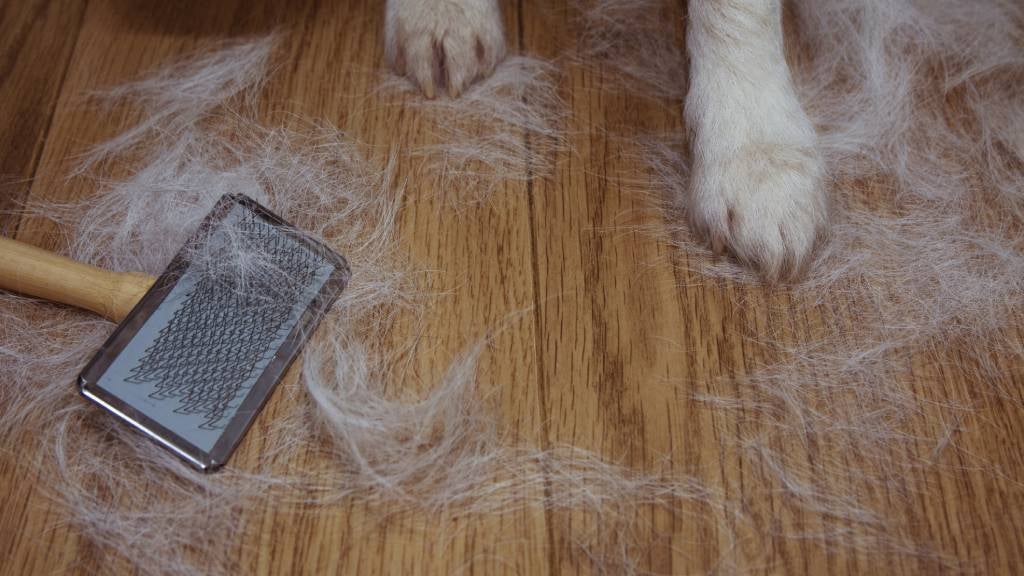
Shocking Reasons Why Is My Non-Shedding Dog Shedding?
Share
Having a non-shedding dog is like owning a piece of living art. Their fur adds warmth, personality, and even a bit of elegance to our homes. However, it can be quite shocking when we observe our beloved 'non-shedding' companions starting to shed. As dedicated pet owners, especially those who are health-conscious, understanding this phenomenon is paramount for both our comfort and their well-being.
In this article, we will dissect the reasons why your non-shedding dog is shedding. Whether you own a Poodle, Bichon Frise, or a Maltese, the shedding of a supposed non-shedding breed can be alarming. Let's dive into this issue and explore the remarkable insights as to why this is happening.

Understanding Non-Shedding Breeds
To fully grasp why your non-shedding dog is shedding, it is beneficial to understand what non-shedding truly means. Typically, many non-shedding breeds have hair similar to human hair, which grows continuously and falls out less frequently.
Myth vs. Reality
The first thing to acknowledge is the myth surrounding non-shedding dogs. While they shed less than traditional dogs, they do not shed completely. Its vital to recognize that these breeds still lose hair and dander, which can accumulate over time. This is particularly significant for those with allergies as even minimal shedding can trigger their sensitivities.

Why Is My Non-Shedding Dog Shedding? The Causes
Now that we understand how non-shedding breeds work, let us look deeper into the causes of shedding. Here are some main factors:
1. Seasonal Changes
One of the most common reasons your non-shedding dog may show signs of shedding is due to seasonal changes. During transitional seasons like spring and fall, many dogs, even non-shedding breeds, can experience a shedding phase. The body naturally reacts to temperature changes causing some hair loss.
2. Diet Factors
A dog's diet plays a significant role in its overall health. Nutritional deficiencies can cause a dogs coat to shed more than normal. Ensure your dog is consuming a balanced diet rich in proteins and fatty acids. Check out this best dog food for fur health and maintenance.
3. Stress and Anxiety
Just like humans, dogs can experience stress and anxiety, leading to unwanted shedding. Changes in their environment or routine can trigger anxiety and result in excessive shedding. Keeping your dog's environment calm, familiar, and nurturing is vital.

How to Manage Shedding in Non-Shedding Dogs
Understanding how to manage shedding is just as essential as knowing the cause. Here are some tips:
Groom Regularly
Establishing a grooming routine is crucial. Regular brushing helps remove loose hair and dander before it can scatter throughout your home. Opt for grooming tools suitable for non-shedding coats. You can also find great advice on minimizing shedding.
Maintain a Healthy Diet
As previously mentioned, feeding your dog a nutritious diet significantly impacts their coat's health. Always consult with your veterinarian for personalized dietary recommendations.
Create a Stress-Free Environment
Ensure your pet feels secure and relaxed. Engage them in stimulating activities and provide soothing environments, especially during seasonal changes.
Frequently Asked Questions
Q1. What is the difference between shedding and seasonal shedding?
A1. Shedding refers to a dog's natural process of losing hair, while seasonal shedding is a temporary phase where dogs shed more due to environmental changes.
Q2. Can allergies cause increased shedding?
A2. Allergies can trigger increased shedding in dogs, where they react to allergens in their environment, causing them to lose more hair.
Q3. How can I tell if my dog's shedding is abnormal?
A3. If your dog is shedding more than usual and showing signs of skin irritations or bald patches, consult your veterinarian for further assessment.
If you're looking for more insights on dog shedding, you can read this helpful article.
As an Amazon Associate, I earn from qualifying purchases.
